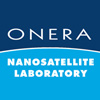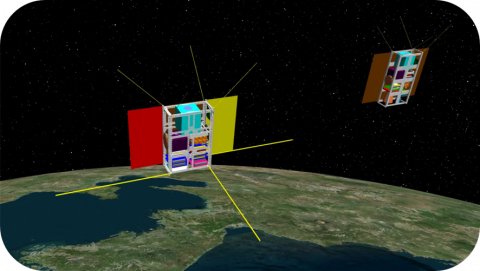The Cubesat technology is reshaping many sides of space activities: in science, from earth observations and monitoring to deep astrophysical studies, Cubesats are performing measurements grouped in constellation or fly in formation; as well as in development of new technologies such as hardware bits or algorithms, easily validated in space. These two major aspects are gathered into the FlyLab mission, designed and operated by ONERA and composed of two 6U satellites flying on a Sun-Synchronous Orbit (SSO) at around 550 km. The platforms are designed and manufactured by an industrial partner.
Both satellites are deployed almost simultaneously, ready to proceed with one of the main objectives of the mission: orbital manoeuvers and formation flying. One satellite includes an electrical propulsion system, the second one a cold gas or chemical propulsion system. To complete this setup the platforms carry a fine attitude control system (star tracker, magnetorquer and reaction wheel) to perform precise pointing for earth observation and telecommunication. This full Attitude and Orbit Control System (AOCS) allows ONERA to test new attitude control algorithms and validate complex manoeuvers in orbit, a first step toward a formation flight.
The other objectives involve several payloads distributed over the two satellites. FlyLab1 carries two optical instruments developed with industrial partners. CATFly is a 1.5 U megapixel infrared thermal camera with a resolution of about 80 m / pixel at 550 km. Its primary objective is to validate the developed technology and optical models by comparing in-flight data with ground-based calibration. The second payload, CAVFly, is a 1 U visible camera with a resolution of about 60 m / pixel at 550 km, used for periodic Earth observations. Both cameras are also used to characterize the companion satellite, FlyLab2.
The second set of payloads, carried by FlyLab2, is composed of CUIONO2 and RepSat, both developed by ONERA. CUIONO2 is composed of VHF antennas and a software defined radio (SDR) card. A ground-based emitter completes the setup to allow the characterization of the ionosphere. RepSat is composed of an L-band antenna and another SDR card designed for radar analysis.


